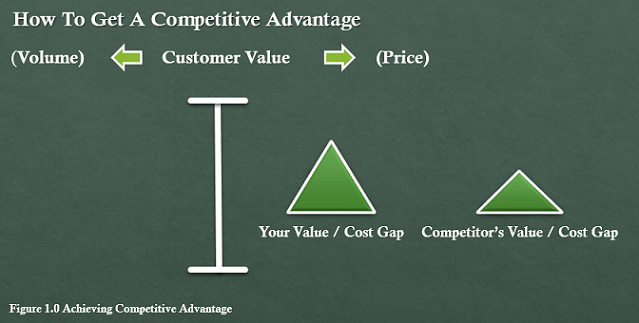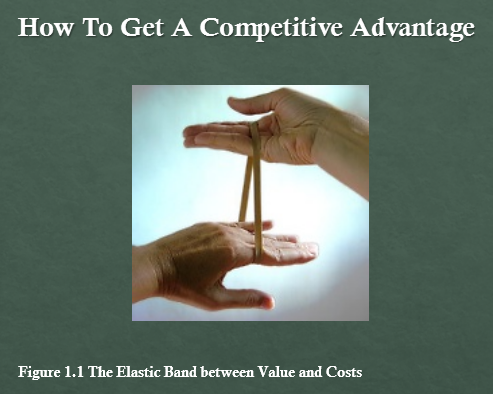Businesses need to face extreme competition in almost any market today. Having an advantage over other business is not enough to guarantee your position on the competitive ground. An ongoing analysis of the marketplace and its capriciousness is undoubtedly needed for your business to be updated and cognizant of the need for strengthening the value of your product and ensuring the efficiency of your service. Overlooking the erratic climates of the market can produce risks and undesirable outcomes.
Moving forward, I’ll give you an overview of what competitive advantage means and how to gain it.
Competitive advantage is basically an advantage gained over competitors by providing your customers with greater value of your products, either through lowered prices or by offering extra benefits and service.
The main concept here is that in a competitive environment everything is relative. Absolutes have no meaning. If we hear that an athlete has run the 100-meter sprint in just 9.7 seconds, this only gives us little data (unless he or she was the only sprinter though). On the other hand, if we hear that the runner won the gold medal, then this story says it all. The same applies in business.
Now, let me ask a question. In gaining competitive advantage, which is more important to you: offering your customers unique benefits or obtaining first-class business effectiveness?
This is a trap question. Having the one without the other (at least at some degree) is not the solution. The lure is to claim both and be done with it. But doing both is not sufficient enough. The genuine solution lies in the difference between the two. It’s about minding the gap.
Minding the Gap

Just like riding an underground railway system in London (if you have been there), when a train pulls into a station, a loud announcement addresses along the platform. Three short words caution passengers to carefully watch their steps in getting on and off the train: “Mind the Gap!”
In business, there are lots of gaps you neglect at your risk. These gaps can be objectively assessed, as Figure 1.0 illustrates.
Based on the diagram, you can achieve competitive advantage if your value/cost gap is bigger than that of your competitors. Value can be best defined as the numerator, and costs as the denominator.
The denominator, which is the cost, is pretty straightforward. Organizations must regularly benchmark its costs against those of its competitors. The numerator is the value driver – the prime mover. Price and quantity are the derivatives of value. Both of these are the ultimate gauge of the level of value you are producing.
Stretching the Elastic Band

How can you get a competitive advantage? Think of an elastic band stretched between value and costs (Figure 1.1). The broader you can stretch the band, the greater your competitive advantage and the profit being generated.
Most business are easily lured to vie on efficiency alone, and continually emphasize on the operational – effective as a panacea. Competitors can’t stop you if you wish to reduce costs. But when you vie on costs, you are really competing only against yourself. Winning on value is way more robust. You have to surpass your contenders.
Establishing first-class value is a must for winning the game. The key, of course, is to know when and how to stretch the band STRATEGICALLY.
Developing Your Winning Proposition
Pursuing value is the right thing to do. A business’ winning proposition summarizes considerable competitive advantage and outlines how a business will be successful in the completion for developing value. These can be pointed out by answering the following questions:
“What unique benefits will we give to our customers in order for them to choose our Company over the others?”
• This is where the words we use towards our customers really matter.
• How will we convert customer value into top-quality financial earnings for our Company?
These particular questions will push you on how to capture both customer value and financial value, and how to convert them into the other.
The bottom-line: Winning Proposition is the centrepiece of strategy. If a business can’t determine its ‘Winning Proposition’ in an easy and persuasive way, then it can’t claim to have a strategy. Your Winning Proposition will be the driving factor to obtain competitive advantage. “Mind the Gap” to identify your numerator and denominator. Finally, you will need to define the elasticity of your business, knowing when and how to do it.

